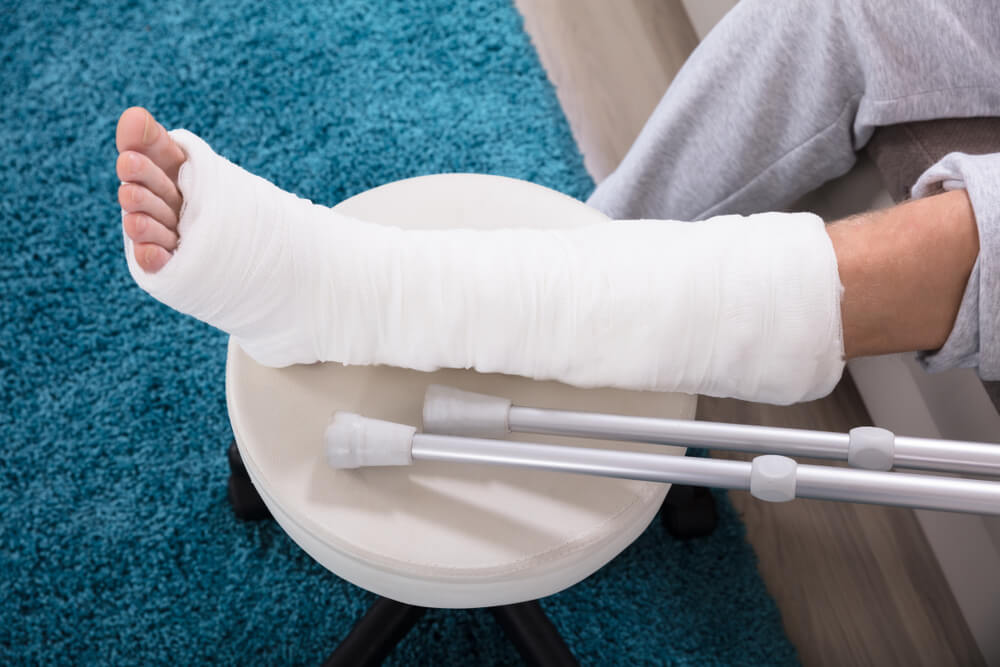Pain is a tool your body uses to tell you something is wrong. It can come on suddenly and disappear within a few weeks, or it can last for months or years. If the latter happens, you may be dealing with chronic pain. The first step to deciding whether you’re suffering from acute vs. chronic pain is understanding their key differences. These two types of pain have different causes and are treated differently by healthcare providers, so telling them apart is crucial to finding the right treatment option.
What Is Acute Pain?

To know if the discomfort you’re feeling is acute vs. chronic pain, you must first understand what acute pain is. Acute pain is usually sudden and sharp. It’s caused by a specific injury or illness and lasts no longer than three to six months.
The discomfort can be mild and last no longer than a few seconds, like when you get a papercut or hit your elbow on the table. Or, it can be intense and last weeks or months, such as when you break your leg. The pain goes away once the underlying cause is resolved.
This type of pain can be caused by:
- Muscle strain
- Trauma such as cuts, burns, and broken bones
- Surgery
- Labor and childbirth
Acute pain is typically simpler to diagnose when it comes to acute vs. chronic pain. This is because most injuries that cause this type of pain are obvious. Sometimes, diagnosis is more complex due to an underlying cause not being clear. In this situation, you might need diagnostic tests to determine the source of your ache.
An example of this is if you have acute abdominal aching. In this case, you might need imaging studies and blood tests to pinpoint the cause and inform your healthcare provider on the best path forward.
Treating acute pain is also usually a simpler process than treating the chronic type. In most cases, your doctor will be able to easily treat the underlying cause of the ache, which in turn will make your discomfort go away. In the case of acute diseases such as appendicitis, surgery might be necessary. After treating the root cause of pain, your healthcare provider will help you manage any soreness until the injury or illness is resolved.
Treatment may include painkillers and anti-inflammatory drugs, which most patients respond well to. Hot and cold compresses may also be appropriate to alleviate the swelling. Once the injury that caused your ache is healed, the pain goes away, and you should be able to go about life the same as before you were injured or ill started. Sometimes, acute pain can become long-lasting. If this happens, figuring out if you have acute vs. chronic pain might become more difficult, and you might need to use a different treatment approach.
What Is Chronic Pain?
When pain lasts longer than six months, it’s considered chronic. This type of pain can be constant, or it can come and go. It might have an obvious cause, such as cancer or shingles. Other times, an injury or disease might trigger changes that make you more sensitive to discomfort even after the original cause of the pain has healed.
For example, a sprained wrist or broken bone might leave you with lingering pain long after the injury has gone away. Something might aggravate these old injuries years after they’ve healed, despite having no apparent reason to hurt. Sometimes, this condition has no obvious cause and is considered psychosomatic. Under these circumstances, your pain is linked to psychological factors such as stress or anxiety.
Chronic pain has been linked to conditions including:
- Arthritis
- Headache
- Shingles
- Nerve damage
- Multiple sclerosis
- Back pain
- Fibromyalgia
When chronic pain goes unmanaged or is poorly managed, it can cause other health effects that lower quality of life, including:
- Muscle stiffness
- Loss of energy
- Limited mobility
- Loss of appetite
- Depression
- Anxiety
- Insomnia
Chronic pain can be hard to diagnose due to the variety of potential causes and the diverse ways it can present itself. When figuring out if you’re suffering from acute vs. chronic pain, you should have your doctor perform a medical exam. Your doctor will ask you to describe your discomfort and any other symptoms you may be experiencing. They will take a medical history, asking about past illnesses and injuries as well as your current stress levels.
To diagnose your condition, your healthcare provider might need to perform medical tests that could include:
- Imaging such as MRI or X-rays
- Reflex and balance tests
- Urinalysis
- Blood tests
- Nerve conduction studies
Unlike acute pain, chronic pain is considered a disease state experienced by 1 out of every 5 American adults. Because there is no fresh injury in need of healing, this condition requires a different approach to treatment than acute pain. Pain presents itself differently to each individual, which means healthcare providers must treat chronic pain on a highly individual basis. It’s also common to use a combination of treatment strategies to tackle this condition.

Depending on the cause and type of chronic pain you’re experiencing, treatment options might include one or more of the following therapies:
- Over-the-counter anti-inflammatory medications
- Physical therapy
- Massage
- Meditation and relaxation practices
- Cognitive-behavioral therapy
- Hot and cold compresses
- Steroid injections
- Opioid medications
- Medicated ointments and creams
- Acupuncture
- Transcutaneous electrical nerve stimulation
- Surgery
- Nerve blocks
- Muscle Relaxants
Both acute and chronic pain is uncomfortable and unpleasant for anyone experiencing it. If your ache came on suddenly and can be linked to a recent injury or illness, it’s most likely acute. Determining which type of discomfort you’re dealing with is an important first step in figuring out the right treatment plan for you.
If, however, you have been experiencing ongoing or recurring pain for over six months, your pain may be chronic. This condition is more challenging to manage since it can be harder to pinpoint the cause of your pain, and not everyone responds the same to certain treatment methods.
Unmanaged or poorly managed chronic pain lowers your quality of life and can make it hard to enjoy the activities you once did. The longer you go without getting your pain under control, the more likely you will experience unpleasant and potentially long-lasting secondary health problems such as fatigue, muscle stiffness, and mental health issues. When dealing with this condition, it’s important to stay informed about your treatment options and which treatments are the best for your situation.
Are you experiencing chronic pain? Dr. Carreras is a compassionate and experienced physician who can help you find relief and improve your quality of life. Make an appointment online or Call Carreras Medical Center to discuss your options today.



